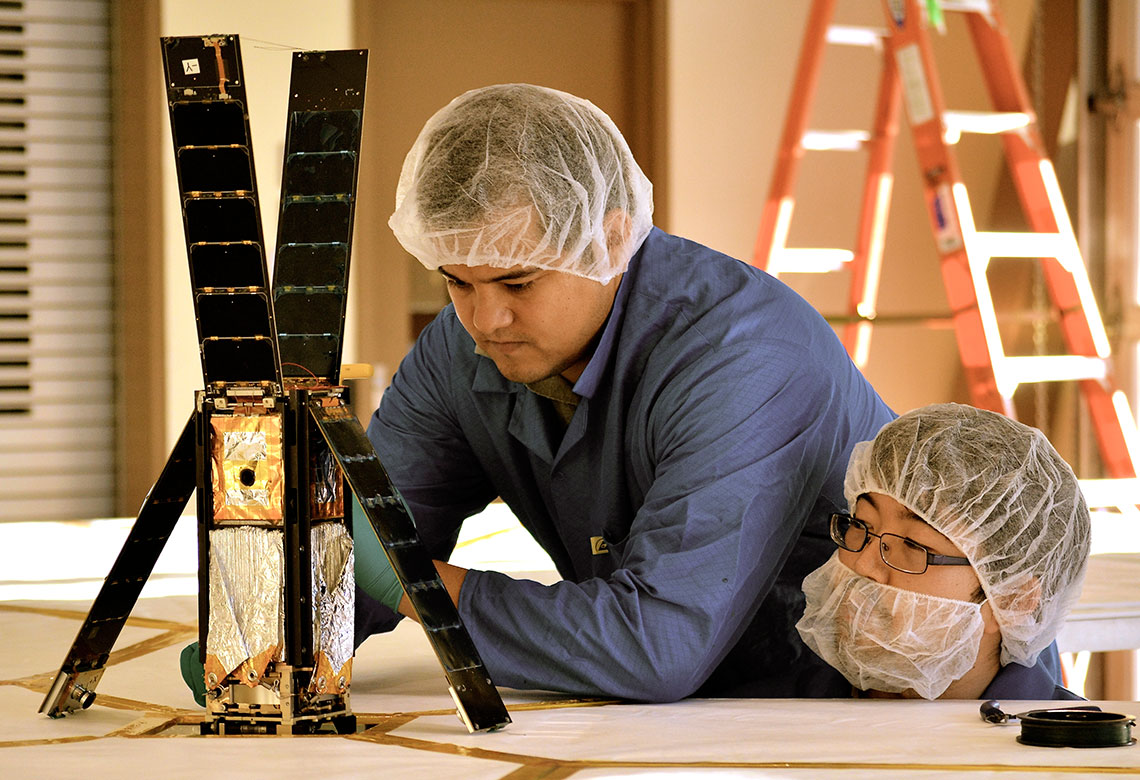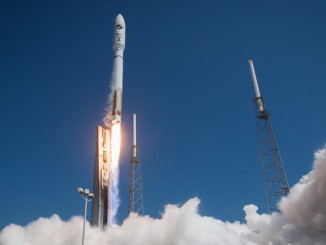Updated June 2.

The Planetary Society’s LightSail spacecraft is back in contact with ground controllers after nine days of radio silence triggered by a suspected software glitch, and engineers plan to send the command to unfurl the tiny satellite’s solar sail as soon as Friday.
Officials re-established communications with LightSail on Saturday, when the CubeSat sent a radio beacon to Earth while flying over a ground station at Cal Poly in San Luis Obispo, California.
LightSail fell silent May 22, two days after launching as a piggyback passenger aboard a United Launch Alliance Atlas 5 rocket with the U.S. Air Force’s X-37B spaceplane.
The citizen-funded LightSail mission is a technological trailblazer for future spacecraft that will test ways to harness photons — tiny particles of sunlight — to push probes through the solar system.
The satellite’s operators suspect LightSail was victim of a software problem that crashed the spacecraft’s computer. Attempts to manually reboot the system failed, so engineers hoped for help from cosmic radiation, which could reset the computer if a charged particle hit the spacecraft in the right place.
Help apparently arrived some time Saturday, according to the Planetary Society, an advocacy group organized to promote space science and exploration of the solar system.
A little nuclei, maybe from a supernova, just travelled hundreds of millions of years to help us out and restart the computer on #LightSail.
— Casey Dreier (@CaseyDreier) May 30, 2015
Engineers have been in contact with LightSail each time it flies over a ground station since Saturday, and the ground team commanded cameras aboard the spacecraft to take a series of test images Sunday.
The first of the images was downloaded to the ground Monday, a key step before managers approve a plan to deploy the craft’s solar sail, an ultra-thin membrane packed inside the shoebox-sized satellite for launch.
The sail will extend in space to cover an area of 344 square feet, about the size of a home’s master bedroom.
Engineers plan to prevent the recurrence of LightSail’s software glitch by rebooting the satellite’s computer once per day. Officials say the satellite shut down after a data file storing LightSail’s radio transmissions grew too large, and daily computer reboots will erase the file’s contents before the problem strikes again.
The earliest opportunity for ground controllers to command deployment of LightSail’s solar sail is Friday, giving engineers time to conduct additional image capture and downlink testing, according to a blog post on the Planetary Society’s website.
Ground controllers plan to order LightSail to open its solar panels Wednesday.
When engineers give the order, four metal booms will unwind like tape measures to coax out four triangular Mylar sails, which measure just 4.5 microns thick — one-fourth the thickness of an average trash bag, the Planetary Society said.

The Planetary Society launched the 10-pound satellite — based on the popular CubeSat form factor — as a pathfinder for a more complex solar sail experiment planned for 2016.
Construction of the spacecraft was funded by private citizens and donors, and NASA paid for LightSail’s ride into orbit on the Atlas 5.
The Planetary Society says the project’s total cost is $5.45 million, including funding for a more ambitious follow-up mission next year. The group launched a Kickstarter page requesting donations from the public to cover $1.2 million of the cost.
Engineers are preparing a similar spacecraft for launch in 2016 aboard a SpaceX Falcon Heavy rocket, which will boost the second LightSail platform to a higher orbit for a full-up solar sailing demo.
The LightSail mission launched on the Atlas 5 went into a lower orbit, where atmospheric drag will overcome any propulsive energy generated from sunlight.
“Through this proof-of-concept mission, we will use CubeSats to open new paths beyond Earth and, one day, potentially to other planets with an inexpensive, inexhaustible means of propulsion: photons, solar energy in its purest form,” Planetary Society chief executive Bill Nye wrote on LightSail’s Kickstarter page.
LightSail follows other solar sail projects launched by Japan and NASA.
Japan’s Ikaros spacecraft launched into orbit around the sun in 2010 was the first mission to prove the solar sail concept. A NASA-built CubeSat in low Earth orbit used a similar solar sail in 2011 to expedite its descent back into Earth’s atmosphere.
Email the author.
Follow Stephen Clark on Twitter: @StephenClark1.



